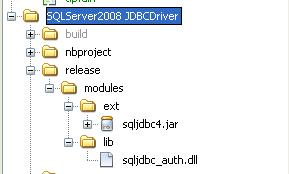-----------
At my job, we've used the UI elements approach pretty extensively and at this time we're moving away from it on a new project.
Conceptually, I've also enjoyed the idea that the location logic is sitting in the same tier as the elements that are being located. The support in S-IDE is also quite nice and impressive (e.g. code completion, documentation), the built-in support for unit testing the locators is quite nice.
Now, the downsides....
- UI Elements development / future : although it is technically a part of Selenium, in practice UI Elements support don't actually evolve in lockstep with it. On a conference call/presentation w/ one of Selenium's maintainers a few months ago, when I asked about UI elements, he indicated that they might be moved out of the core (he didn't seem to be particularly fond of them, I almost had the feeling that he was tempted to just drop the feature). There isn't much of a community using them in the first place, thus if something breaks they can remain broken for a while until someone notices (when that happened to us, the turnaround was pretty quick; although I'm not sure if that is the way it is or because the author of UI elements for Selenium was a former employee).
- The skills gap : the fact that the UI element definitions are defined outside the main "test case authoring" environment (which in our case is Groovy), makes it another distinct skill that team members (often QA folks) need to acquire. When it comes to Javascript, being a user is easy, being an author who can sling Javascript and write nifty unit tests (typically not a QA skillset) inside of the UI elements is not that easy. At least in our case it led to a bunch of not very well maintained UI Elements, w/ most of the Unit tests commented out and the knowledge of writing UI Elements withing the QA team considered almost a Dark Art. As a result of all this
- Development cadence issues : although the usage of UI elements in a test case seems very sexy, the same "development cadence" for UI Elements is kinda slow (this could be my own ignorance as well). Basically, if you wanted to enhance a UI element, you would write some Javascript to set up the UI Element definitions and then close S-IDE and open it up again. If your unit test failed, then you would get a bunch of popups about the failing tests, the UI Elements would be disabled and you're back to editing the javascript file until the unit test passes. Only after that, you can try using the UI element in S-IDE or in your test case. Finally, if you were using selenium-server to run your "real" test cases (like we did), you need to restart selenium server (RC) so that it can pick up the updated UI Elements.
- UI Element organization : this could be an artifact of our own failings w/ UI elements and not necessarily a problem w/ the framework itself; however, the lack of a well defined approach to structuring them has led us into a massive set of pagesets that contains UI elements for a whole bunch of different pages. Thus, when you try to pick up a UI element there isn't a good organizing principle ("Oh, yeah, I'm on the Login page, lemme see what I can locate there") - instead we have something along the lines of ("I'm in feature 'foo', let me see which one of the several hundred UI element in the fooFeaturePageSet might fit").
Although the Page object approach is not a silver bullet it addresses a bunch of the issues above:
- Skillset - the same skills that test authors use to write test cases, they use to write the abstraction (page objects)
- A clear organizing principle - people get it, pages have stuff in them, putting the location logic for an element on a page inside of the corresponding page object makes sense. Then, using that is just a method call
- Deployment / Cadence issues - there is no longer the impedance mismatch of "I want to run this test case, did I re-deploy the UI elements that it depends on?". You just run the test, the testing framework will recompile the modified page objects and the test case runs, no need to do anything w/ Selenium server or anything else.
